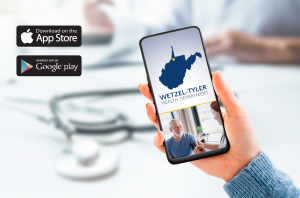Family Emergency Plan
Make a plan today. Your family may not be together if a disaster strikes, so it is important to know which types of disasters could affect your area. Know how you’ll contact one another and reconnect if separated. Establish a family meeting place that’s familiar and easy to find.
Step 1: Put a plan together by discussing the questions below with your family, friends or household to start your emergency plan.
- How will I receive emergency alerts and warnings?
- What is my shelter plan?
- What is my evacuation route?
- What is my family/household communication plan?
- Do I need to update my emergency preparedness kit?
- Check with the Centers for Disease Control (CDC) and update my emergency plans due to Coronavirus.Get masks (for everyone over 2 years old), disinfectants, and check my sheltering plan.
Step 2: Consider specific needs in your household.
As you prepare your plan tailor your plans and supplies to your specific daily living needs and responsibilities. Discuss your needs and responsibilities and how people in the network can assist each other with communication, care of children, business, pets or specific needs like operating medical equipment. Create your own personal network for specific areas where you need assistance. Keep in mind some these factors when developing your plan:
- Different ages of members within your household
- Responsibilities for assisting others
- Locations frequented
- Dietary needs
- Medical needs including prescriptions and equipment
- Disabilities or access and functional needs including devices and equipment
- Languages spoken
- Cultural and religious considerations
- Pets or service animals
- Households with school-aged children
Step 3: Fill out a Family Emergency Plan
Download and fill out a family emergency plan or use it as a guide to create your own.
Step 4: Practice your plan with your family/household
Family Emergency Preparedness Kit
To assemble your kit, store items in airtight plastic bags and put your entire disaster supplies kit in one or two easy-to-carry containers such as plastic bins or a duffel bag. This is to assist in keeping items dry and keeping unwanted bugs out of these items.
A basic emergency supply kit could include the following recommended items:
- Water – at least one gallon per person per day, stored in plastic bottles.
- Food – Nonperishable, ready-to-eat goods that won’t make you thirsty.
- Specialty food for babies, people with special needs and pets.
- Manual can opener.
- Battery-powered or hand crank radio and a NOAA Weather Radio with tone alert.
- Flashlight with extra batteries.
- First aid kit.
- Whistle (to signal for help).
- Up-to-date medications needed by each family member (and a list of them).
- Money – small bills and change.
- At least one complete change of clothes and shoes for each person.
- Sleeping bags or blankets.
- Moist towelettes, garbage bags and plastic ties (for personal sanitation).
- Personal hygiene supplies – soap, toothpaste, toilet paper, feminine products.
- Utility knife, small tools, plastic sheeting and tape (to shelter in place) and rope.
- Matches stored in a waterproof container.
- Dust masks to filter contaminated air.
- Masks (for everyone ages 2 and above), soap, hand sanitizer, disinfecting wipes to disinfect surfaces.
- Prescription medications. About half of all Americans take a prescription medicine every day. An emergency can make it difficult for them to refill their prescription or to find an open pharmacy. Organize and protect your prescriptions, over-the-counter drugs, and vitamins to prepare for an emergency.
- Non-prescription medications such as pain relievers, anti-diarrhea medication, antacids or laxatives.
- Paper and pencil or pen.
- Maps and compass.
- Copies of important documents – social security cards, birth certificates, insurance papers, deeds, records of valuables & pet shot records.
- Recent family and pet photos.
- Toys and games for children.
- Local maps.
- Cell phone with chargers and a backup battery and list of important numbers.
- Vinyl or latex gloves.
Learn about hazards
- Install smoke and carbon monoxide detectors in your home and test them regularly, Replace batteries every year.
- Learn what to do for other types of hazards, such as floods, fires, severe winter weather, disease epidemics and terrorism. Learn how and when to shelter-in-place.
Learn evacuation routes
- Create two evacuation routes for each room in your home in case of fire.
- Ask local authorities about any emergency evacuation routes in your area.
Establish two family meeting spots
Decide on place to meet after a home fire and another in the event you cannot get back to your neighborhood.
Important phone numbers
Pick an emergency contact; an out-of-town relative or friend. Teach all family members to contact that person if they cannot reach each other. Give this information to your child’s school.
Know how and when to shut off utilities
Ask water, power and gas companies how to safely turn off utilities. Teach your family and never turn gas back on yourself.
Pets
Make sure pets wear ID tags. Keep recent photos and immunization records of pets. Plan for pet care in case you have to leave home without your pets.
Review and practice your plans
Update information as needed. Hold drills regularly.

